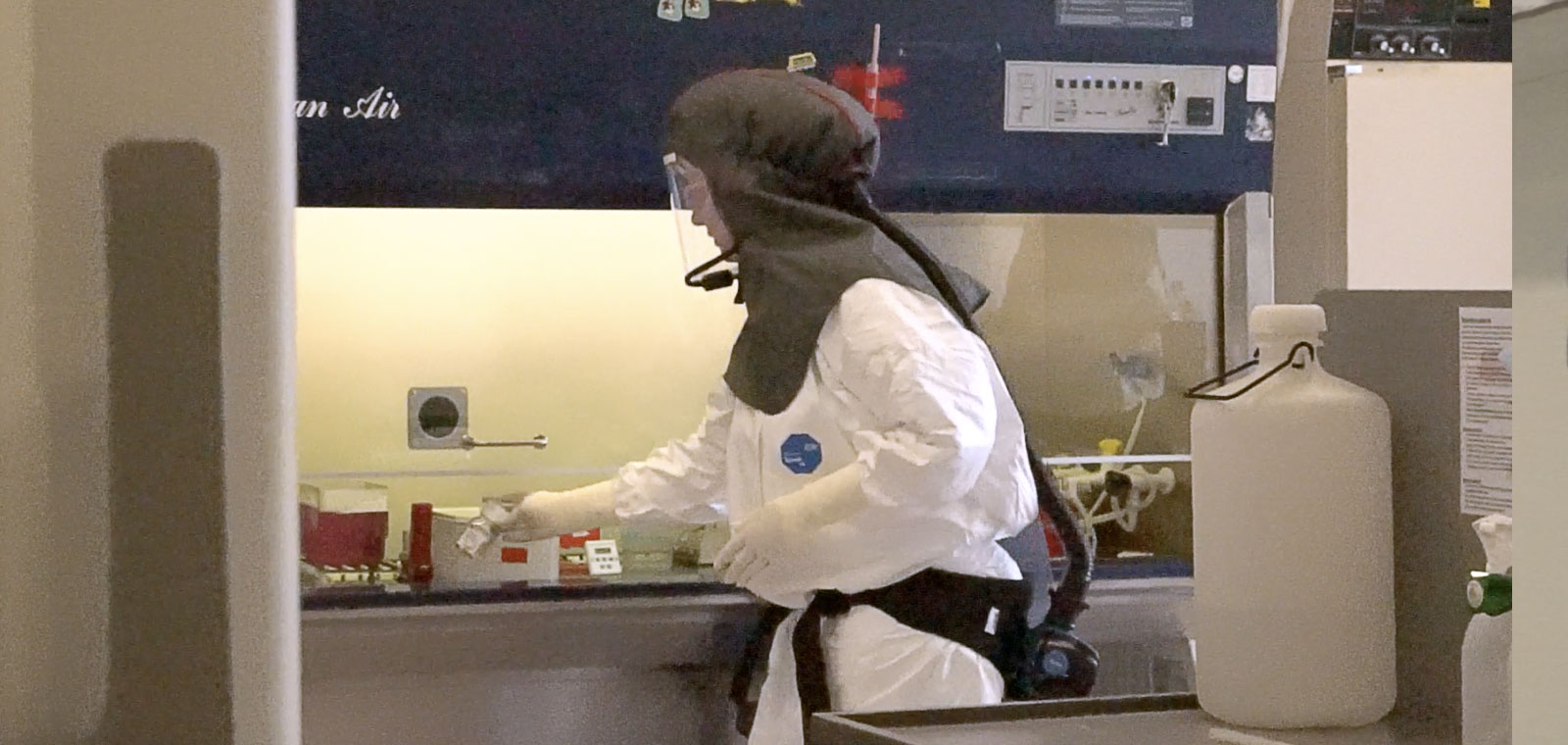
Babs from the department of virology tells it herself.
Twenty-five years ago I was faced with the choice, doing research in test tubes or with people? I chose for the scientific link between the two, preclinical research. In 2020 you suddenly find yourself on the frontline of the most wanted vaccine on earth.
Research with laboratory animals rarely takes place on the frontline. Now it is. Unfortunately, there is still only one way to investigate whether a vaccine protects against coronavirus infection, and that is with laboratory animals. I understand the call to invest more money into potential animal-free alternatives, but that doesn’t mean that we should not use the only means currently at our disposal.
‘Business as usual’
Actually it is weird. What we do now is exactly the same as what we always did. Working on a solution for a virus infection that is disrupting society. Except, usually it is not our own society, but that of people living far away. In recent years, we have mainly focused on HIV, flu virus, dengue virus, rift valley fever virus, usutu virus and zika virus. These studies have now been put on hold to prioritise coronavirus. Thanks to the flexibility of co-workers from other departments, we can prevent ongoing research programs from unacceptable delay. But honestly, we have to pull out all the stops.
Not entirely business as usual
And yet there is a difference. The corona virus is something that also affects our own daily life. Our parents are also at risk to develop COVID-19. Our children were also homeschooled. And yes, we also get crazy about the one and a half meter rules in our laboratories and offices. And then, when you come home in the evening you receive a text message from a friend asking how long it will take before there is a vaccine, because she also wants to visit her mother.
Safety above everything else
Like doctors and nurses, BPRC people risk their own health for COVID-19 research. We sometimes work with amounts of virus comparable to 10 liters of snot. You don't just do that. It does something to you. You know that you are trained for this and that you are protected by your 'moon-suit-light'. You've done every action in the lab at least a hundred thousand times and it always went well. Yet, you also remember the rare events where despite all experience and safety precautions, it went wrong, and someone infected himself.
The fear of contracting the virus outdoors
Another difference is that we can also get infected outside of the lab. Like anyone, we also go to the supermarket. We can pick up the virus there and pass it on. For example to fellow animal care workers or veterinarians. This entails risks. If they become infected, they can inadvertently transmit the virus to the animals they care for every day. In healthcare, people not only wear mouth masks and disposable gloves to protect themselves, but also to prevent them from spreading the virus. We use a similar strategy to protect our monkeys. Just like hospitals, BPRC also has to deal with the scarcity of protective equipment. Tribute to colleagues who keep coming up with creative solutions so that there is no shortage and the research can continue.
In the frontline
I have no illusion that someone is irreplaceable. Still, any sneezing, coughing, or snotty nose can be an omen that you will be at home for at least two weeks, because you should avoid endangering colleagues or monkeys. Two weeks in which your direct colleagues in the lab have to do it with two hands less. But also two weeks without the thrill of a tricky plaque assay, ELISA, PCR or flow cytometric test that has finally succeeded. Because it is above all. Doing science at a time when every day counts and every day brings us closer to the vaccine. Together we get corona under control!
And after that? Then we throw ourselves full again on viruses that may not be bother us ourselves, but that make life difficult for people in South America, Asia and Africa in particular. Because that's what we're good at. Paving the way for universities, research institutes and companies developing vaccines or medicines for life-threatening viral infections that regularly overload local hospitals.
And as long as there is no organ-on-a-chip, computer model or other innovative model that can mimic our entire immune system, we are unfortunately forced to do this with laboratory animals.

